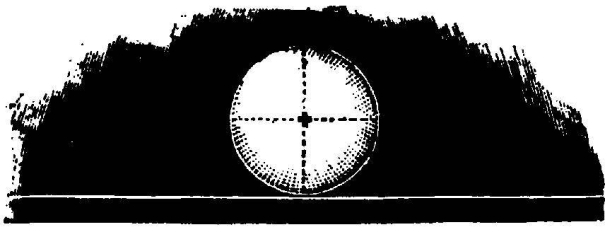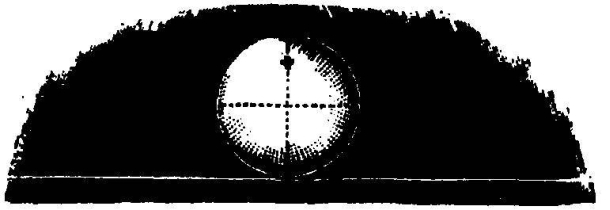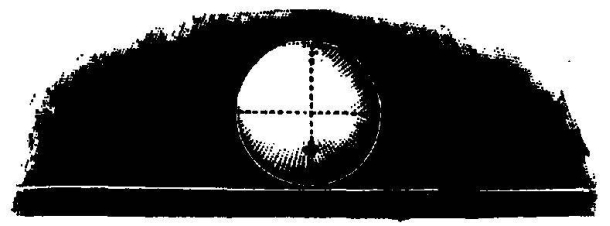The theory of blow in billiards

Billiards (billard, from the French bille - ball or fr. Billette, billart - stick) - the collective name of several board games with different rules, as well as a special table on which the game is played.
A characteristic feature of all billiard games is the movement of balls with the help of a cue.
The room, specially equipped for playing billiards, - Billiard room.
The homeland of the billiard game is considered to be India or China.
A good billiard
The billiard plane consists of two squares stacked together. This ancient form of billiards is based on a deep study of billiard games. Of course, if billiards had the outline of a strict square, then the doublets, triplets and in general all the "reflected" balls would go with remarkable regularity. It would also be on a round billiard table. But only billiards in the form of a quadrangle gives a lot of different positions of the ball, and that's why this form is preserved forever.
A good billiards should be, above all, great. This main advantage is so important that, no matter how small the billiards is, it is accurate, elegant and strict, another excellent player will not play on it.
And this is true. On a small billiards another blow, another calculation. A player who excellently plays on a large billiard, playing on a small one also confidently and freely, often substitutes balls and sees with annoyance how the party is won by a deliberately weak player. And this is easy to understand, for that on a large billiards playing out, then on a small stand. In a word, here the most obvious law of billiard game is most obvious: the more fake, easier and less billiards, so the strengths of a good and bad player are more balanced. That's why a first-class player will never play on bad billiards.
Billiards should be strict and correct - not only in the sense of fabricating its sides and pockets, but also regarding the selection of balls to the pockets.
After all, any billiards at first glance is easy to make strict: it is only to take the balls that would hardly enter the pockets. The truth is, it will be relative severity. True rigor is the observance of the mathematical proportionality between the sizes of billiards, the size of the pockets and the diameter of the balls. At the same time, the following important law of all Russian parties must be kept in mind: it is required that any ball drop into any pocket with a strong impact, it would be impossible to play on the board in the middle pocket.
Satisfying this law in a technical sense is very difficult, but possible. However, some masters do not recognize that the side ball, one of the most brilliant blows on billiards, could fall while walking on the board. Other masters and most of them, on the contrary, try to facilitate the making of sideballs. To do this, they lower the plane of the billiards at the sides, as a result of which the ball is drawn to the board, and therefore the balls, even if they are incorrectly taken, inevitably fall into the pocket with a quiet blow.
At present it is almost impossible to meet strict billiards, on which the ball would go on board. Now these billiards can not do. The billiards of Freiberg's heirs are often so strict that the party good players play about an hour. So, on these billiards are taken into account all the various elements of the game and all sacrificed only one precision sight. This game should be called rough. This billiard is one-sided approaching the bowling alley.
On the exact billiards, all the purity and charm of the game depends on the reasonable cutting of billiard pockets, and therefore I draw the attention of billiard manufacturers to this question.
Technique of the game
The technique of billiard game is: in the ability to play equally successfully strong and quiet shtosom, make direct strikes, cut, be able to duple and finally - own the exit and wagering.
In fact, even for the most inattentive observer, it is obvious that every billiard player is good or bad, all the same, his own way of playing, his own blow. Everywhere there are heard expressions: he has a beautiful blow, that bold blow, etc. Consequently, the quality depends on the talent or incompetence of each individual nature.
There is no doubt that through long and uninterrupted exercises it is possible to refine to the astonishment of the eyes, to master the incredible accuracy of the blow, but the blow of the artist of this free, bold and wide scope can not be acquired by anything if there is no it from nature.
If you do not have by nature a beautiful blow, do not pursue it. It is better to work hard, develop philosophical composure, and you, perhaps, will never regret that nature has bypassed you in another respect.
Players who play constantly for a lot of money get used to playing a smooth, moderate and mercilessly correct blow. In this blow there is no sharp either forte or piano - it is very monotonous and self-confident in itself. Such a blow is called commercial. A player who is accustomed to playing in this manner will never take risks, never neglect the stand from harmful boastfulness and only if he accidentally makes a stand himself. This game, of course, is very instructive, but it is both dry and, so to speak, too machine. In it there is no fire, aristocratic performance and taste. Moreover, when an artist meets with a commercial player, with brilliant technique and reasonable risk, although of equal strength, the first is discouraged, that in a row all parties start losing.
A completely direct blow at a considerable distance between the balls is rightly considered the most difficult blow on billiards. The easiest way to make a straight ball down. So I advise you to do it for beginners. It is much more difficult to play with straight Clapstacks and even harder to draw. However, these three strokes should not be content with the artist. He must sometimes use a French blow.
Physics of billiards
As is well known in physics, the laws of elastic bodies are considered in great detail, and formulas expressing the force of impact of balls, velocity after impact, etc. are derived.
Unfortunately, all these formulas are derived only for balls having one motion - translational, ie, forward. In the billiard game, you have to constantly consider the impacts of balls that have two or even three movements. When analyzing these blows, let us agree to call our ball red and assume that on the billiard table an arbitrary number of white balls necessary to explain this or that variation of the game - we generalize all the billiard parties to study the laws of ball hits.
It is not difficult to see that the balls touch each other at points. It should be added that with a strong impact, due to the considerable elasticity of ivory, these points are far from geometric. Therefore, the balls easily transmit to each other not only translational, but also rotational motion. Then, above it was said what is the "true point of sight", and that for each particular case of the position of the balls it is one, and when it is visible, they say: "the ball is visible"; When it is not visible, they say: "the ball is not visible." Now we turn to the effects of the billiard game.
Clapstos

Point of impact at klapshtos
Physics teaches that if the balls are the same size, then when one ball hits another, then the last one will bounce, and the hit will stop motionless in place. The same thing always happens on billiards, but for this it is necessary so to strike with a cue of red so that it receives only one forward motion (central blow). Then, after the blow, the white will fly into the pocket, and the red will stop in place. This is "klapshtos".
Thus, if you hit the cue in the center of the ball "in the plane parallel to the billiard table," you will get a clapstoose.
Klapstos is a very beautiful and useful blow. It is very light at a short distance and very difficult at the far. In general, the following law applies to all strokes (except for rolling): the difficulty of performing a stroke is proportional to the distance between the balls. Of particular importance is Klapstos in the game a la guerre, which will be seen later.
Nakat

Rifle strike point
It often happens that the cue ball goes forward after the blow. To do this, they strike with a red drawn-out long stroke smoothly in a plane parallel to the billiard table, into the upper part of the ball. Then the cue ball, moving forward, will also turn from top to bottom, and when it hits the white ball, it will give the latter only its forward movement, the movement from top to bottom will save and therefore, pausing for a moment on the spot, after the impact moves forward. A similar blow is called "roll-up".
Nakat is the most ordinary and the easiest stroke. All beginners begin to play just down. Moreover, when you roll, the sight and the strike are the most accurate, so there are very strong players who use only this blow. Particularly important is rolling on playing Polish billiards. But for all that the art of going out and wagering requires the use of other blows that need to be studied.
Brace

Point of impact when delayed
Sometimes it is required that after the blow your ball should go back. For this, it is necessary to inform him of two movements: one translational, and the other - rotational from the bottom up. Then his ball after the impact will give the foreign movement, keeping the rotation from the bottom up, and, standing still, will move back. This blow is called a brace.
The pull is the most beautiful and the most difficult blow. Many very skillful blows are unthinkable without delay. The application of this blow is very extensive.
When delaying, the greatest importance is the instantaneous and soft impact. Moreover, a sticker is very important - to a certain extent elastic and rough.
If a player wants to make a very tight draw, or if two balls are too close, it is necessary to strike from the top down at an angle of 45 °. This short and rapid strike is extremely difficult.
Lateral or French strikes (Frenchman)
All considered blows are ordinary sts, used by players of medium and high strength. They are produced by blowing a cue in a vertical plane to the center of the ball, above or below it. But players of superb power for a variety of exit and wagering also use the so-called "side" blows, which are applied by the cue point to the right or left of the central vertical line of the ball. These blows are quite difficult, especially in terms of assessing the impact strength of cue. Their use is very diverse.
Right sideways

The point of impact at the klapshtos "Frenchman to the right"
This is a blow to the middle point on the right side of the cue ball. With such a blow, the cue ball, in addition to forward movement, also receives a rotational movement around the vertical axis that passes through the center of the ball, counterclockwise and, after colliding with the ball being played, transferring the translational motion to it, turning with a top and entrained by its rotational movement, the ball will go only to the right.
Left sidewall

The point of impact at the Klapstos is "Frenchman left"
Blow into the middle point on the left side of the cue ball. The action of this blow is similar to the previous one, only the cue ball gets vertical rotation clockwise and after the collision with the other ball it will go only to the left.
Rushing the Frenchman
Too effective and original blow. This roll is used in the case when, after hitting white, the red should go left or right and forward. To do this, hit the cue along the red smoothly and extensively in the upper part, retreating to the right or left of the vertical line of the center. The Frenchman's attack is the easiest of all French strikes.
French guy's pull
Also one of the hard blows. It is used when it is required that the red, after hitting the white, go back and still to the right or to the left. Achieve this by hitting shortly and quickly red down, but to the right or left of the vertical center line.
All these side impacts are called French, because the most widely used are on French billiards without pockets in the carambola lot. These attacks were of great importance when the cue and sticker were perfected. The main advantage of them is a convenient achievement through their wagering or exit.
Dougovik
Suppose that one alien ball is above the pocket, and the other is blocking it. Then, to play someone else's pockets, it is necessary to play with an arch. To do this, strike your ball with the cue to the left (right) and down, giving him a strong rotation around the vertical axis from left to right, while at the same time informing him of the forward movement to the right of the line between the centers of his and the first stranger. Then the addition of these two motions results in a motion along the arc (parabola).
If the ball, launched to the right of the mentioned line between the centers of the balls, had no lateral rotation about the axis, then it would go in a straight line. But, since the lateral rotation from left to right incessantly carries it to the left, it will go both to the right and to the left, that is, along an arc.
Jump
It is such a blow when your ball, jumping over a stranger strikes, puts another stranger in the pocket. To achieve this, a ball is applied over its ball at a 30 ° angle to the ball. Then your own, pushing away from the surface of the table, will jump and roll in a straight line. This result can be achieved in another way. Holding the cue in the plane parallel to the surface of the billiards, bring the end of the cue to the bottom of his. Then they throw this ball and throw it through a stranger. This method is easier, but not as reliable as the previous one.
The Leman's Strike
Cue quickly and easily pressed on the playing ball, after which the airborne falls into the pocket.


Comments
When commenting on, remember that the content and tone of your message can hurt the feelings of real people, show respect and tolerance to your interlocutors even if you do not share their opinion, your behavior in the conditions of freedom of expression and anonymity provided by the Internet, changes Not only virtual, but also the real world. All comments are hidden from the index, spam is controlled.